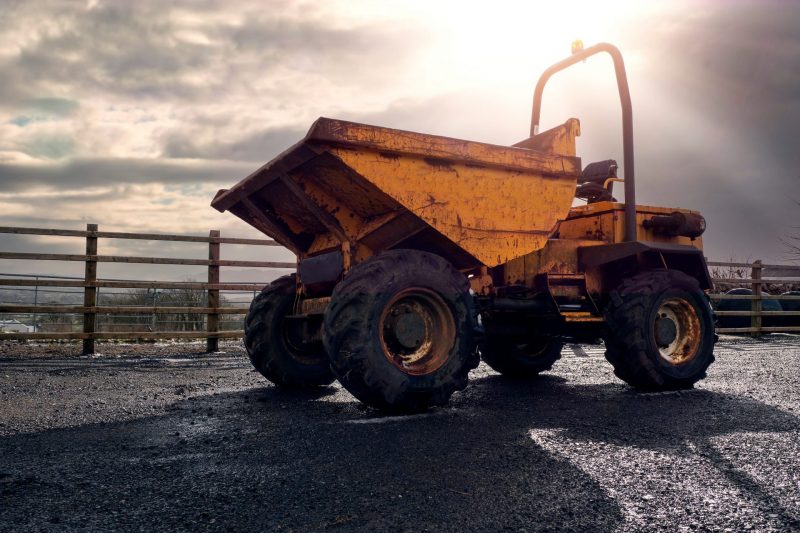Purchasing used heavy equipment is obviously a massive undertaking. It’s not surprising because these things are quite expensive and, as such, are major investments.
Used machinery is quite beneficial. They’re cost-effective while functioning just as good as their brand-new counterparts. However, used heavy equipment also comes with risks and unknowns, such as hidden issues or problems that may lead to extensive repairs later on.
To reduce these risks and find good deals when buying used heavy equipment, take the following factors into consideration so you can make the right decision and keep yourself from wasting your time and valuable money:
Table of Contents
1) Equipment History
One vital thing to look at before buying any second-hand heavy equipment is its history. Check if there are no liens against it, and if it’s stolen or not. Take a look at its title as well. Bear in mind that ownership won’t be transferred from the buyer to the seller until the equipment is paid for in full.
Checking the ownership history can also help you know if you’re getting a good deal or not. If the machinery has been sold many times, it can either be unused or poorly maintained. But, if the equipment has been with one owner, it’s most likely that its owner has taken good care of it.
Ask the seller if the necessary documentation is ready, which further proves that there are no liens against it. You can also do your own research or consult your bank to help you with this process. To check if the equipment is stolen or not, write down its serial number or PIN (product identification number).
You can then check with another seller who also sells the same equipment or call the police department to see if someone has reported any equipment that has the same serial number or PIN with the machinery you’re looking to buy.
2) Seller’s Reputation
Another important factor to consider is the seller’s information and reputation. Checking the individual or company who’s selling heavy equipment is worth the time because it can give you an idea about the nature of the transaction.
If they’re a reputable seller, they should have positive reviews, testimonials, and an established reputation in the industry. Such attributes will make it easier for you to trust what they’re offering.
But, if the seller is hard to find, it’s best if you find another one. Search online if you can locate any information about the seller, such as their past customers and how long they’ve been selling used heavy equipment.
A seller’s reputation can help give you more confidence and peace of mind, knowing that you’re making the right choice, for instance, when buying used cranes Australia.
3) Wear & Tear
All used equipment will show signs of wear and tear, and these are to be expected. What you need to do is to be able to tell what’s normal wear and tear from what’s a sign of neglect and misuse.
Start by checking the machine’s undercarriage for signs of wear and tear or damage, especially on areas or parts that have been recently repaired or replaced. Examine the repairs to see if they’re done properly.
Do a thorough walk-through of the equipment, inspecting all parts of the machine. Be wary of any structural damage, such as hairline cracks or welding patches. Look for signs of body damage as well.
Replacing damaged parts with aftermarket alternatives can be an innovative and cost-effective solution when faced with such situations. One of the key advantages of opting for aftermarket parts to replace damaged construction equipment components is cost-effectiveness. Original Equipment Manufacturer (OEM) parts can be expensive, often carrying a premium price tag due to branding and associated costs.
You don’t want to spend money on a used heavy equipment only for it to break down later, causing you to spend more on extensive repairs or replacement.
4) Operating Hours
Unlike cars and trucks, a heavy machinery’s lifespan can be determined by looking at its total operating hours instead of mileage. All equipment comes with an internal clock that automatically tracks its operating hours.
Machinery that’s been used full time tends to wear down more quickly and requires frequent repairs and replacement. Although age can have a huge impact on the equipment’s selling value, its operating hours are a critical factor in determining its true price.
Knowing an equipment’s total operating time will not only help set its selling price, but also give you a clear picture as to how many serviceable hours it has left. It can also tell you about any upcoming maintenance and replacement procedure it may require.
Final Thoughts
Take your time when it comes to buying used heavy machinery. The worst thing you can do is to rush the process, which may lead to a bad purchase. Take the time to consider all important factors and weigh all your options before making a decision.







